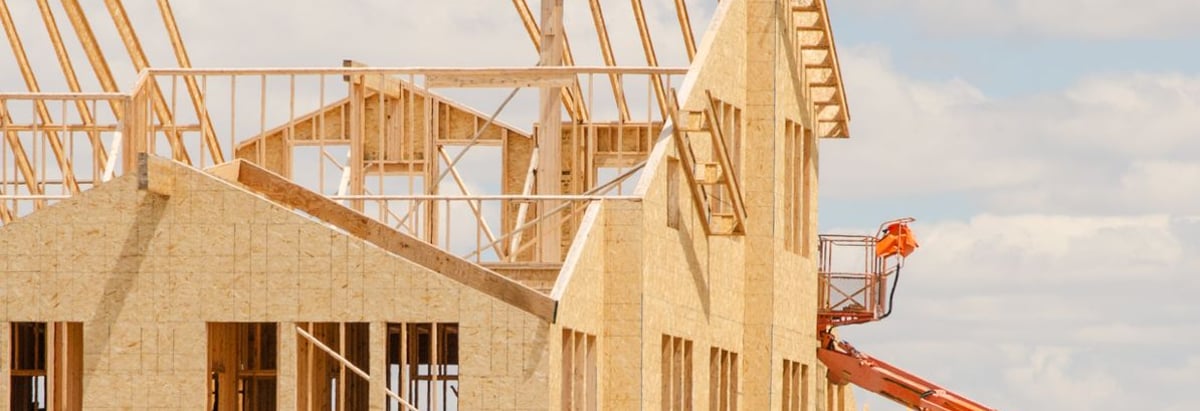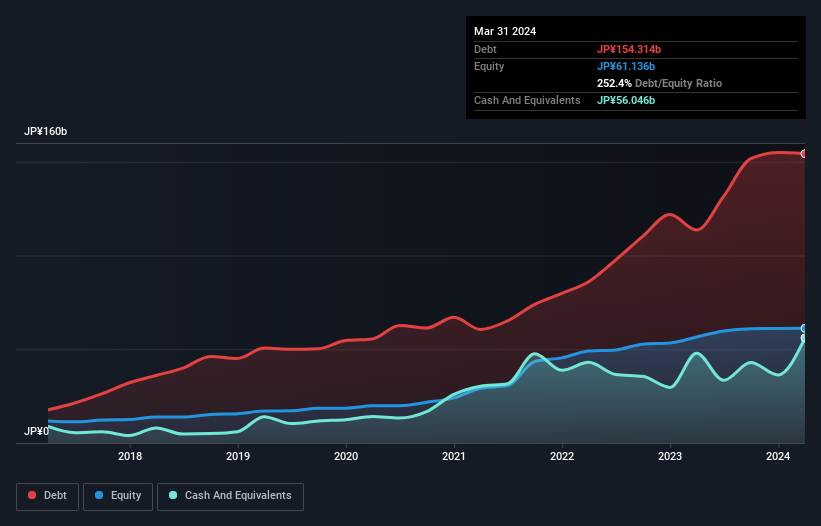- Japan
- /
- Consumer Durables
- /
- TSE:3465
Here's Why Ki-Star Real EstateLtd (TSE:3465) Is Weighed Down By Its Debt Load

Legendary fund manager Li Lu (who Charlie Munger backed) once said, 'The biggest investment risk is not the volatility of prices, but whether you will suffer a permanent loss of capital.' So it seems the smart money knows that debt - which is usually involved in bankruptcies - is a very important factor, when you assess how risky a company is. As with many other companies Ki-Star Real Estate Co.,Ltd (TSE:3465) makes use of debt. But should shareholders be worried about its use of debt?
Why Does Debt Bring Risk?
Debt is a tool to help businesses grow, but if a business is incapable of paying off its lenders, then it exists at their mercy. In the worst case scenario, a company can go bankrupt if it cannot pay its creditors. While that is not too common, we often do see indebted companies permanently diluting shareholders because lenders force them to raise capital at a distressed price. Of course, plenty of companies use debt to fund growth, without any negative consequences. The first thing to do when considering how much debt a business uses is to look at its cash and debt together.
See our latest analysis for Ki-Star Real EstateLtd
What Is Ki-Star Real EstateLtd's Net Debt?
The image below, which you can click on for greater detail, shows that at March 2024 Ki-Star Real EstateLtd had debt of JP¥154.3b, up from JP¥113.6b in one year. However, it does have JP¥56.0b in cash offsetting this, leading to net debt of about JP¥98.3b.

How Healthy Is Ki-Star Real EstateLtd's Balance Sheet?
According to the last reported balance sheet, Ki-Star Real EstateLtd had liabilities of JP¥139.8b due within 12 months, and liabilities of JP¥45.1b due beyond 12 months. On the other hand, it had cash of JP¥56.0b and JP¥325.0m worth of receivables due within a year. So its liabilities total JP¥128.5b more than the combination of its cash and short-term receivables.
This deficit casts a shadow over the JP¥52.6b company, like a colossus towering over mere mortals. So we'd watch its balance sheet closely, without a doubt. At the end of the day, Ki-Star Real EstateLtd would probably need a major re-capitalization if its creditors were to demand repayment.
We use two main ratios to inform us about debt levels relative to earnings. The first is net debt divided by earnings before interest, tax, depreciation, and amortization (EBITDA), while the second is how many times its earnings before interest and tax (EBIT) covers its interest expense (or its interest cover, for short). The advantage of this approach is that we take into account both the absolute quantum of debt (with net debt to EBITDA) and the actual interest expenses associated with that debt (with its interest cover ratio).
While Ki-Star Real EstateLtd's debt to EBITDA ratio of 8.2 suggests a heavy debt load, its interest coverage of 8.6 implies it services that debt with ease. Our best guess is that the company does indeed have significant debt obligations. Shareholders should be aware that Ki-Star Real EstateLtd's EBIT was down 41% last year. If that decline continues then paying off debt will be harder than selling foie gras at a vegan convention. There's no doubt that we learn most about debt from the balance sheet. But it is future earnings, more than anything, that will determine Ki-Star Real EstateLtd's ability to maintain a healthy balance sheet going forward. So if you're focused on the future you can check out this free report showing analyst profit forecasts.
Finally, a business needs free cash flow to pay off debt; accounting profits just don't cut it. So we always check how much of that EBIT is translated into free cash flow. Over the last three years, Ki-Star Real EstateLtd saw substantial negative free cash flow, in total. While that may be a result of expenditure for growth, it does make the debt far more risky.
Our View
To be frank both Ki-Star Real EstateLtd's EBIT growth rate and its track record of staying on top of its total liabilities make us rather uncomfortable with its debt levels. But at least it's pretty decent at covering its interest expense with its EBIT; that's encouraging. Considering all the factors previously mentioned, we think that Ki-Star Real EstateLtd really is carrying too much debt. To our minds, that means the stock is rather high risk, and probably one to avoid; but to each their own (investing) style. When analysing debt levels, the balance sheet is the obvious place to start. However, not all investment risk resides within the balance sheet - far from it. We've identified 3 warning signs with Ki-Star Real EstateLtd (at least 1 which is concerning) , and understanding them should be part of your investment process.
If you're interested in investing in businesses that can grow profits without the burden of debt, then check out this free list of growing businesses that have net cash on the balance sheet.
Valuation is complex, but we're here to simplify it.
Discover if Ki-Star Real EstateLtd might be undervalued or overvalued with our detailed analysis, featuring fair value estimates, potential risks, dividends, insider trades, and its financial condition.
Access Free AnalysisHave feedback on this article? Concerned about the content? Get in touch with us directly. Alternatively, email editorial-team (at) simplywallst.com.
This article by Simply Wall St is general in nature. We provide commentary based on historical data and analyst forecasts only using an unbiased methodology and our articles are not intended to be financial advice. It does not constitute a recommendation to buy or sell any stock, and does not take account of your objectives, or your financial situation. We aim to bring you long-term focused analysis driven by fundamental data. Note that our analysis may not factor in the latest price-sensitive company announcements or qualitative material. Simply Wall St has no position in any stocks mentioned.
About TSE:3465
Ki-Star Real EstateLtd
KI-Star Real Estate Co.,Ltd operates as a real estate company.
Reasonable growth potential with adequate balance sheet.
Market Insights
Community Narratives




